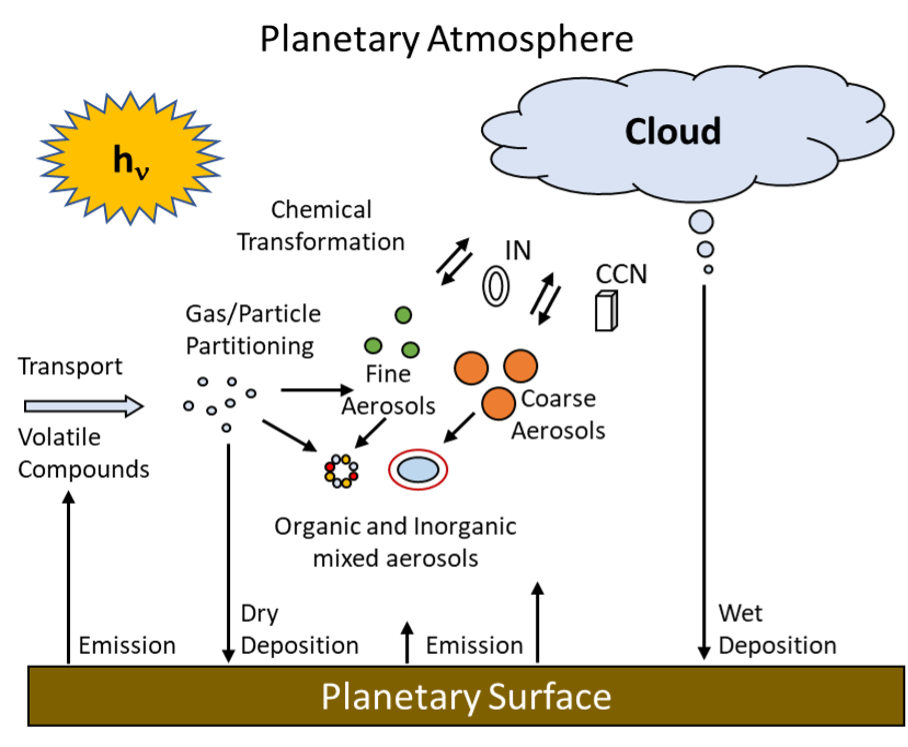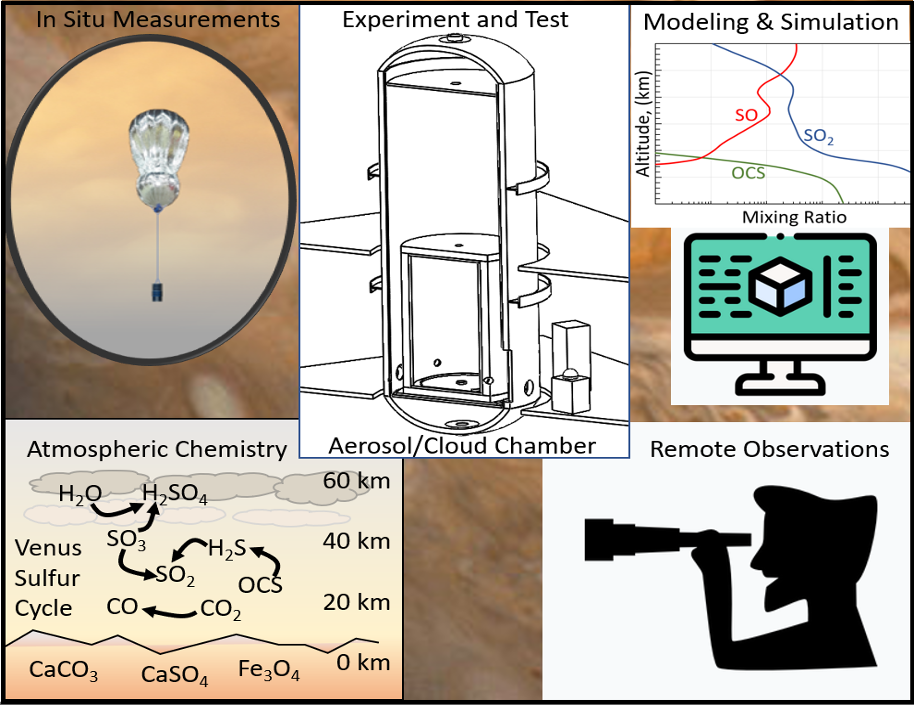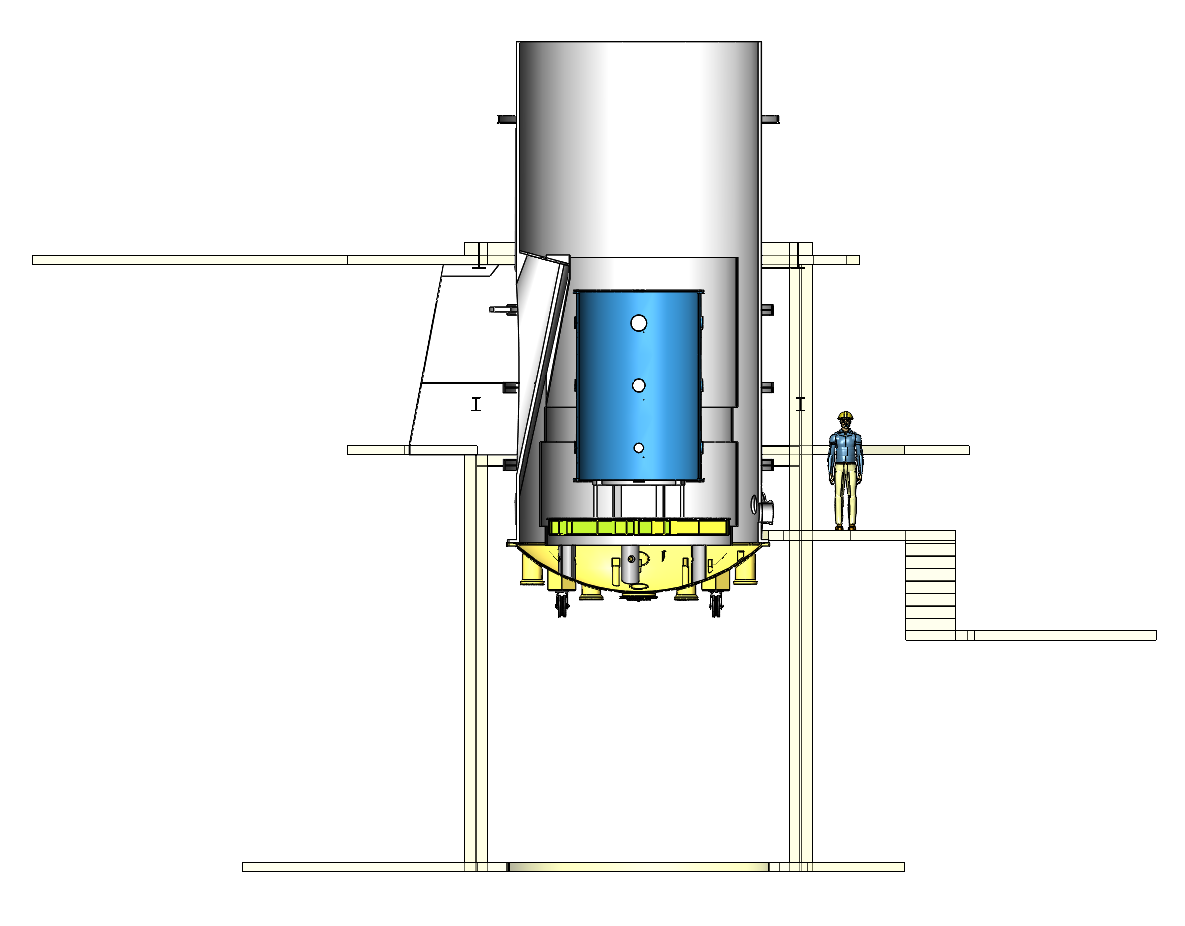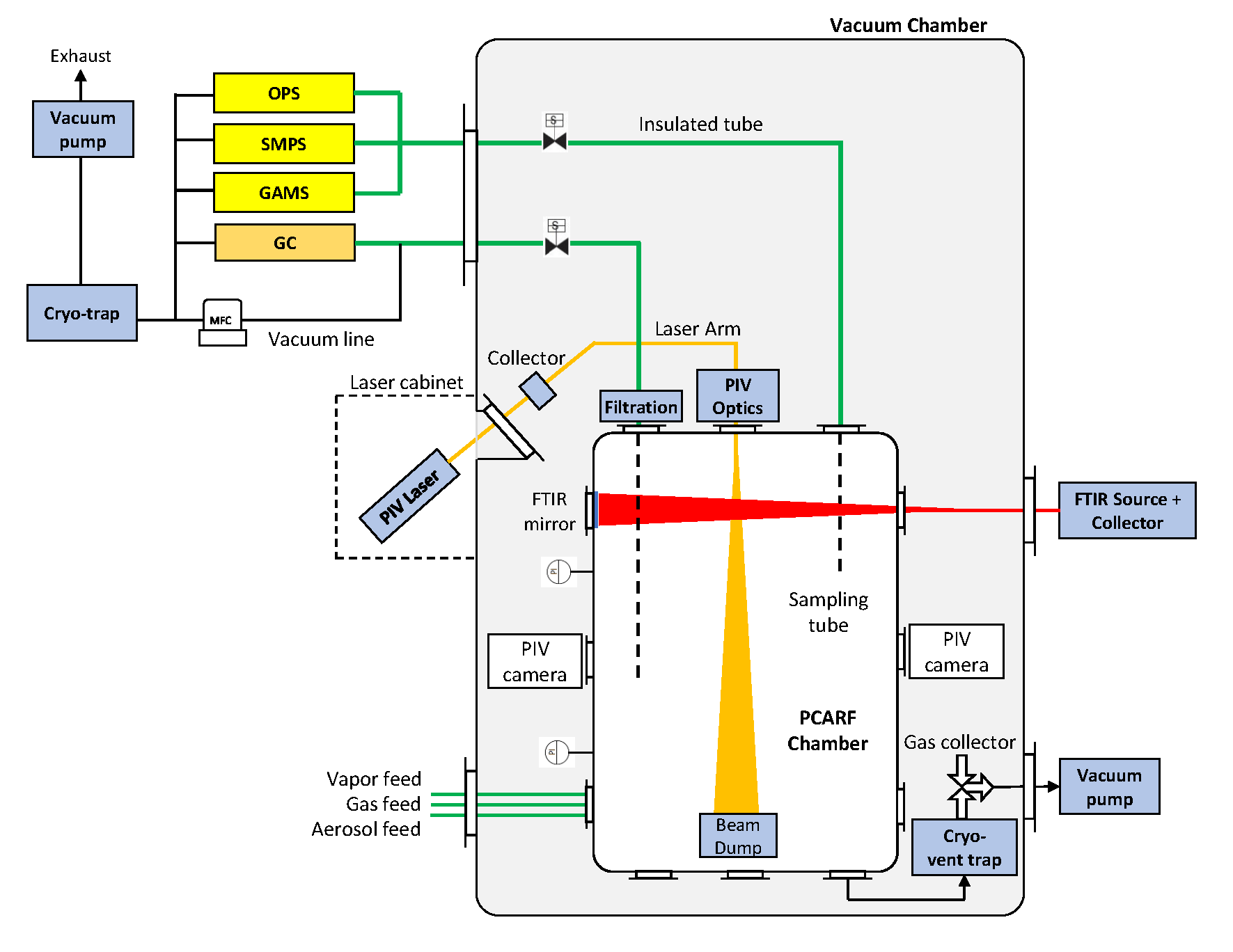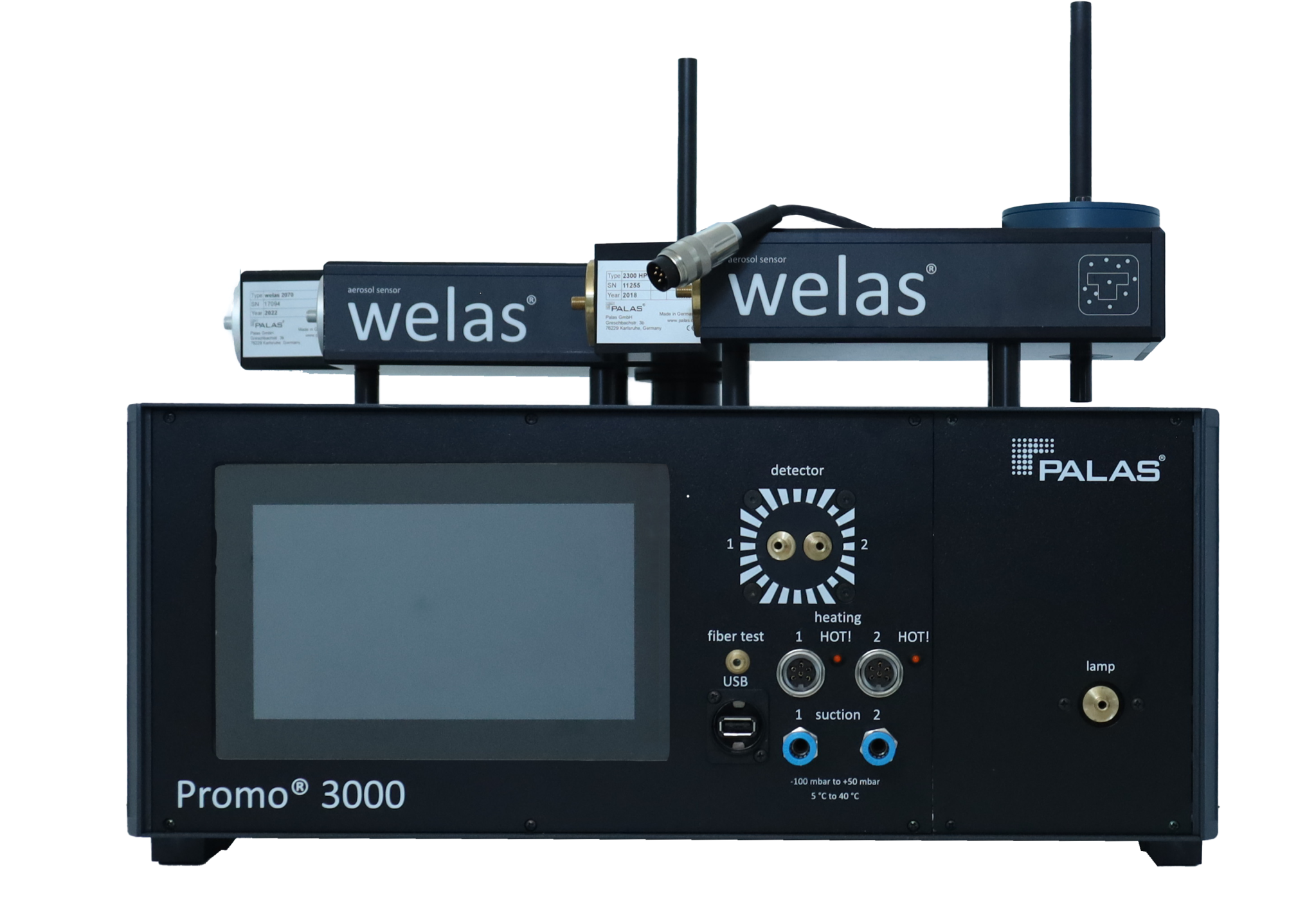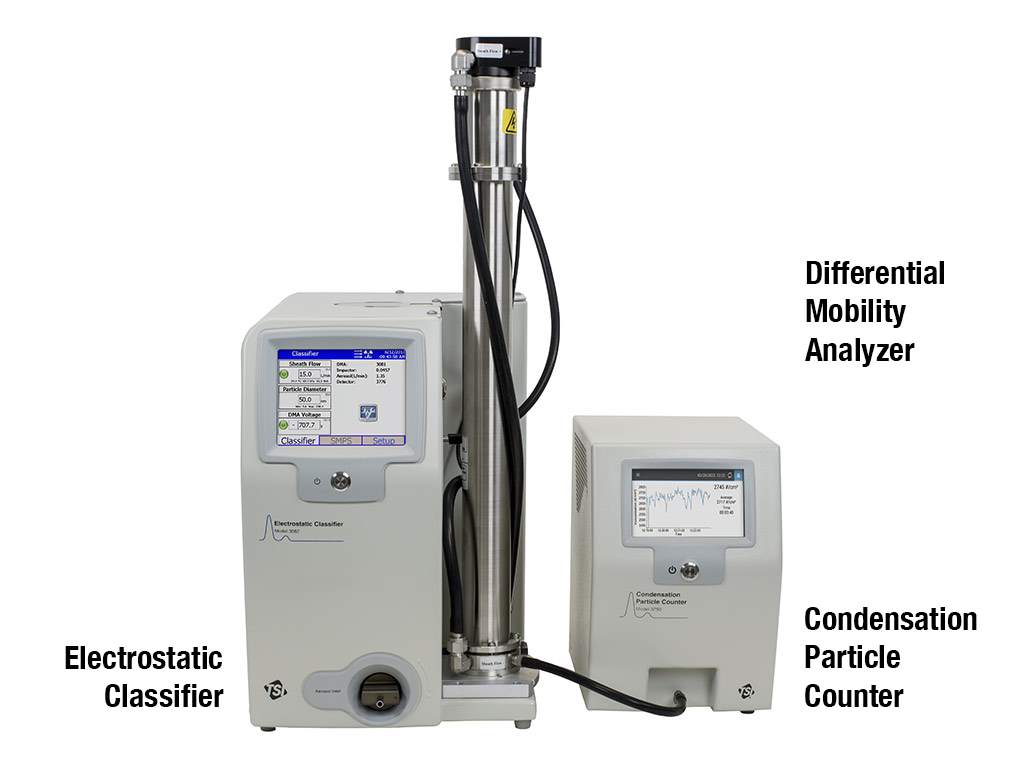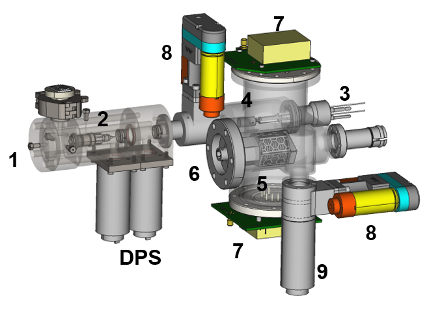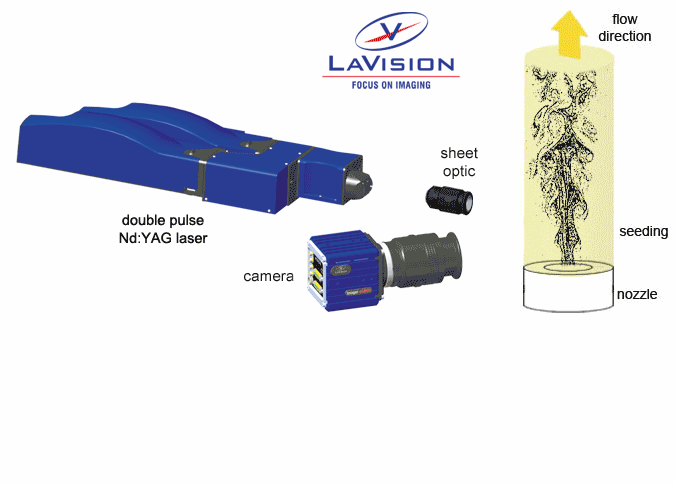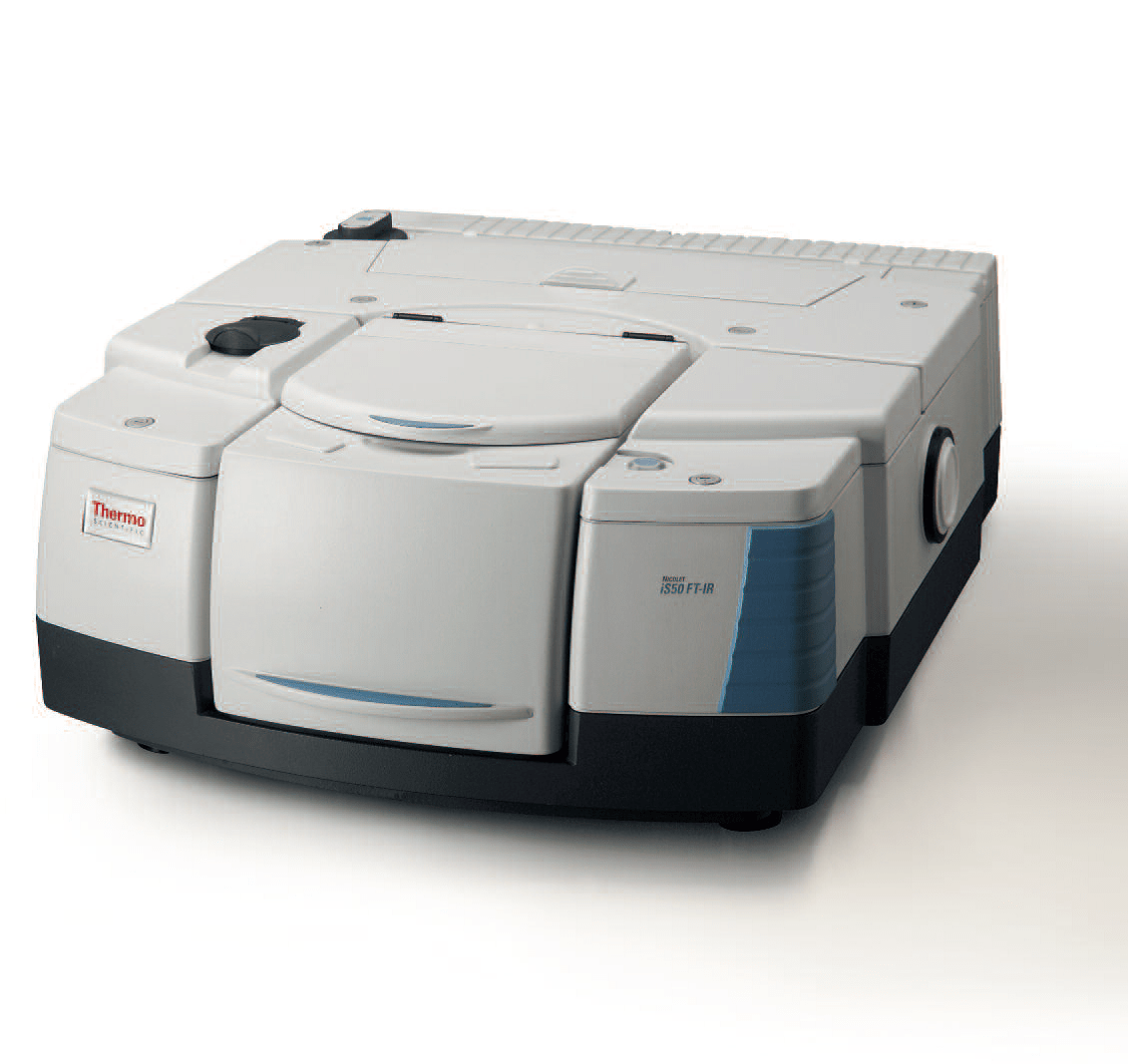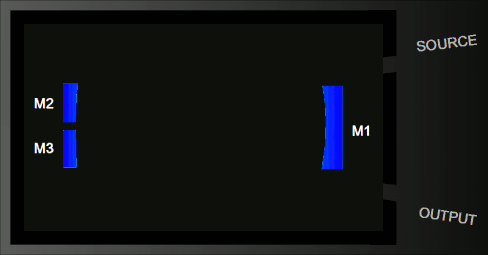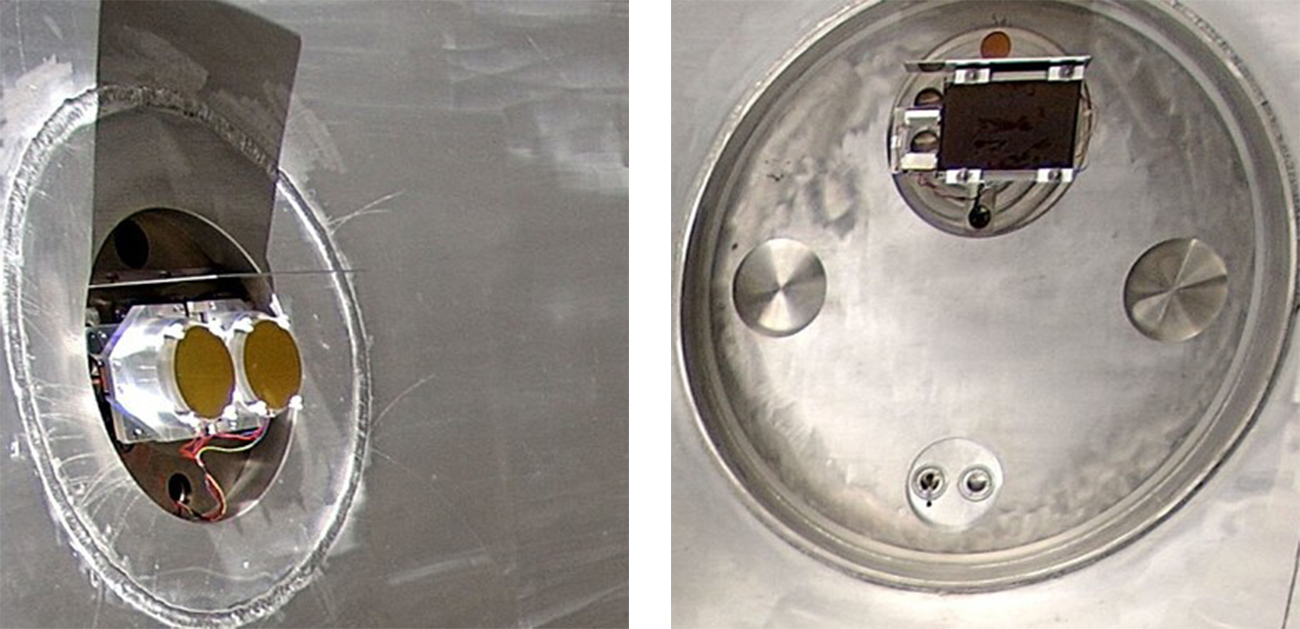Motivation
PCARF is designed to enable the scientific experimental investigation of aerosol processes, with a focus on understanding how planetary atmospheric aerosols form clouds and evolve within our solar system and on exoplanets. While existing chambers are primarily dedicated to studying cloud formation processes on Earth, PCARF extends the range of temperature, pressure, and gas compositions to replicate conditions found in the cloud regions of other planets.
The complexity of cloud formation involves numerous interacting processes as illustrated in the following diagram.
The experimental aims to complement, validate and corroborate current and future research into planetary aerosols conducted through:
- Computational modeling
- Experimental chemistry
- Remote observations
- In situ measurements
About the Facility
PCARF is a stand-alone assembly housed within the JPL’s 10-foot diameter vacuum chamber, featuring the following specifications:
- Dimensions: 2 meters in diameter and 3 meters tall, with a total volume of 9 cubic meters.
- Three distinct temperature zones: the bottom plate, top plate, and the lateral walls. Each section of the chamber is independently controlled.
- The chamber accommodates 14 ports with a 6-inch diameter, 2 ports with an 8-inch diameter, and 2 ports with a 10-inch diameter.
Chamber Operational Capabilities
- Temperature range: -180° to +125°C
- Pressure range: 1 μbar to 1 bar
- Ambient gases: N2, CO2, and He/H2
- Various trace gases
PCARF Instrumentation
Purpose: to quantify the chemical composition and microphysical property of planetary atmosphere.
PCARF will be equipped with a suite of instruments to quantify the following observables:
- aerosol size distribution
- aerosol number density
- aerosol optical properties
- aerosol chemical composition
- particle velocity and trajectory during cloud formation and evolution
- number density and optical properties of trace gases
Additional features include temperature sensors, pressure sensors, humidity sensors, particle imaging, and particle sampling capabilities.
The instruments, their related observables, and their data acquisition technique are summarized in the following table.
| INSTRUMENT | OPS | SMPS | GAMS | PIV | FTIR |
|---|---|---|---|---|---|
| Data Acquisition Technique | In situ | In situ | In situ | Remote sensing | Remote sensing |
| Aerosol size distribution | ✔ | ✔ | ✔ | ||
| Aerosol number density | ✔ | ✔ | ✔ | ✔ | |
| Aerosol optical properties | ✔ | ||||
| Aerosol chemical composition | ✔ | ✔ | |||
| Particle velocity and trajectories during cloud formation and evolution | ✔ | ||||
| Number density and optical properties of trace gases | ✔ |
Instrument Descriptions and Capabilities
Optical Particle Spectrometer (OPS)
Purpose: to quantify size distribution and number density of large aerosols [greater than 1 micrometer]
Model: Promo 3000 System Unit Controller, Welas 2100 HP sensor head
Measurement type: In-situ
Capabilities:
- The OPS sensor is equipped with a versatile inlet system capable of collecting aerosol samples across a wide range of atmospheric conditions.
- Pressure range: 0.2 to 10.0 bar
- Temperature range: -130 to +120 ºC
- The sensor features corrosion-resistant components and a specialized cuvette for enhanced durability in harsh environments.
Aerosol sizing and counting:
- Particle size range: 0.5 to 100 micrometers with up to three selectable measuring ranges: [0.3 to 10] µm, [0.3 to 17] µm, [0.6 to 40] µm.
- Concentration range: Up to 106 particles/cm3
- For concentrations of 2.0×105 particles/cm3 or higher, the system can reliably measure aerosol concentrations on a 1-second basis.
Scanning Mobility Particle Sizer (SMPS)
Purpose: to quantify size distribution and number density of small aerosols measuring less than 1 micrometer in diameter.
Model: TSI SMPS 3938
Measurement type: In-situ
Capabilities:
- The SMPS is designed for high-precision aerosol sizing and counting, covering a particle size range from 10 nm to 1 micrometer. With additional components, capabilities can extend down to 1 nm.
- Pressure range: 0.7 to 1.25 bar,
- Temperature range: 10℃ to 40℃
- The sensor features 128 size channels within the measuring range for detailed analysis.
Measurement sequence:
The SMPS operates through a 4-step process involving three subsystems:
- Large particle removal: filters out particles larger than 1 micrometer
- Charge conditioning
- Particle sizing
- Aerosol concentration measurement
Gas and Aerosol Separator Mass Spectrometer (GAMS)
Purpose: to quantify the chemical composition of planetary atmospheres, particularly in challenging environments like those containing sulfuric acid aerosols.
Development: JPL/NASA project led by Principal Investigators: Dragan Nikolic and Stojan Madzunkov.
Capabilities:
- The GAMS can perform a broad range of in-situ measurements, offering speciation and quantification of trace gases and aerosols in harsh conditions.
- Pressure range: 0.01 to 60 bar
- Temperature range: – 40 ℃ to 80 ℃
Measurement details:
Provides speciation and quantification of trace gases and aerosols.
- Detects species within the range of 1-150 amu.
- Achieves a precision of 20% within 0.5 hour for any species with concentration as low as 50 ppb.
- Measures the chemical composition of aerosols smaller than 10 microns.
- Features an Advanced Aerosol Inlet (AAI) module that separates aerosols from trace gases.
- Utilizes a Quadruple Ion Trap Mass Spectrometer (QITMS).
Particle Image Velocimetry (PIV)
Purpose: to capture both large- and small-scale particle motion, providing detailed analysis of the flow field. The system uses a pulsed laser and light sheet optics to capture images of seeding particles and measures flow fields by cross-correlating pairs of images.
Model: 2D3C PIV LaVision, offering 2D imaging with 3 velocity components using a dual-camera assembly within the light sheet.
- Direct tracking of particles 0.5 micron or larger, allowing for real-time observation of condensation processes.
- Two lens configurations enable flexible analysis, accommodating both large scale and small-scale flow dynamics.
- The system operates with a laser pulse rate of 15 Hz, ensuring high temporal resolution in capturing rapid flow events.
Fourier Transform Spectrometer for the Infrared (FTIR)
PURPOSE: to quantify the chemical composition and microphysical property of trace gases and aerosols. The system uses white mirror cells to achieve long path lengths from 12 to 150 meters, enabling precise observations of trace gas concentrations, as well as particle composition, size, and shape.
Model: Nicolet iG50 or iS50 Standard Mid-IR Spectrometer equipped with a KBr beamsplitter and MCT detector.
Capabilities:
- Direct tracking of particles 0.5 micron or larger, allowing for real-time observation of condensation processes.
- Two lens configurations enable flexible analysis, accommodating both large scale and small-scale flow dynamics.
- The system operates with a laser pulse rate of 15 Hz, ensuring high temporal resolution in capturing rapid flow events.

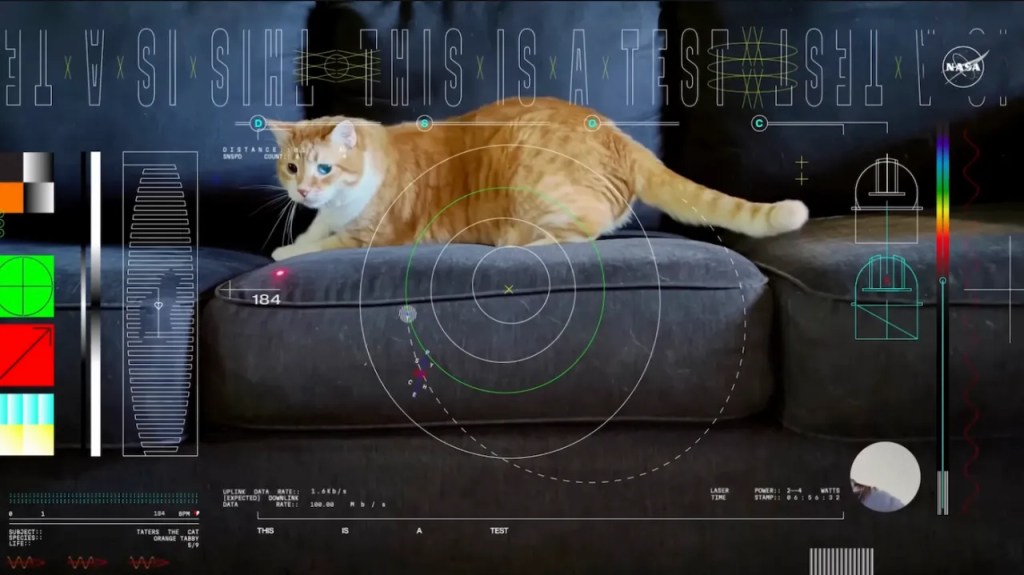
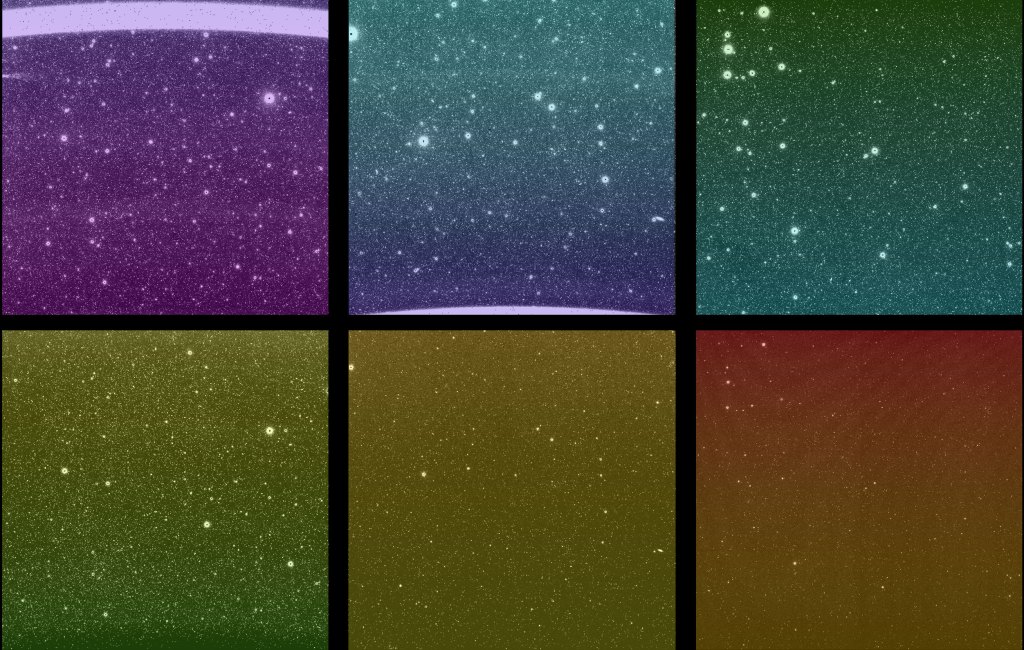
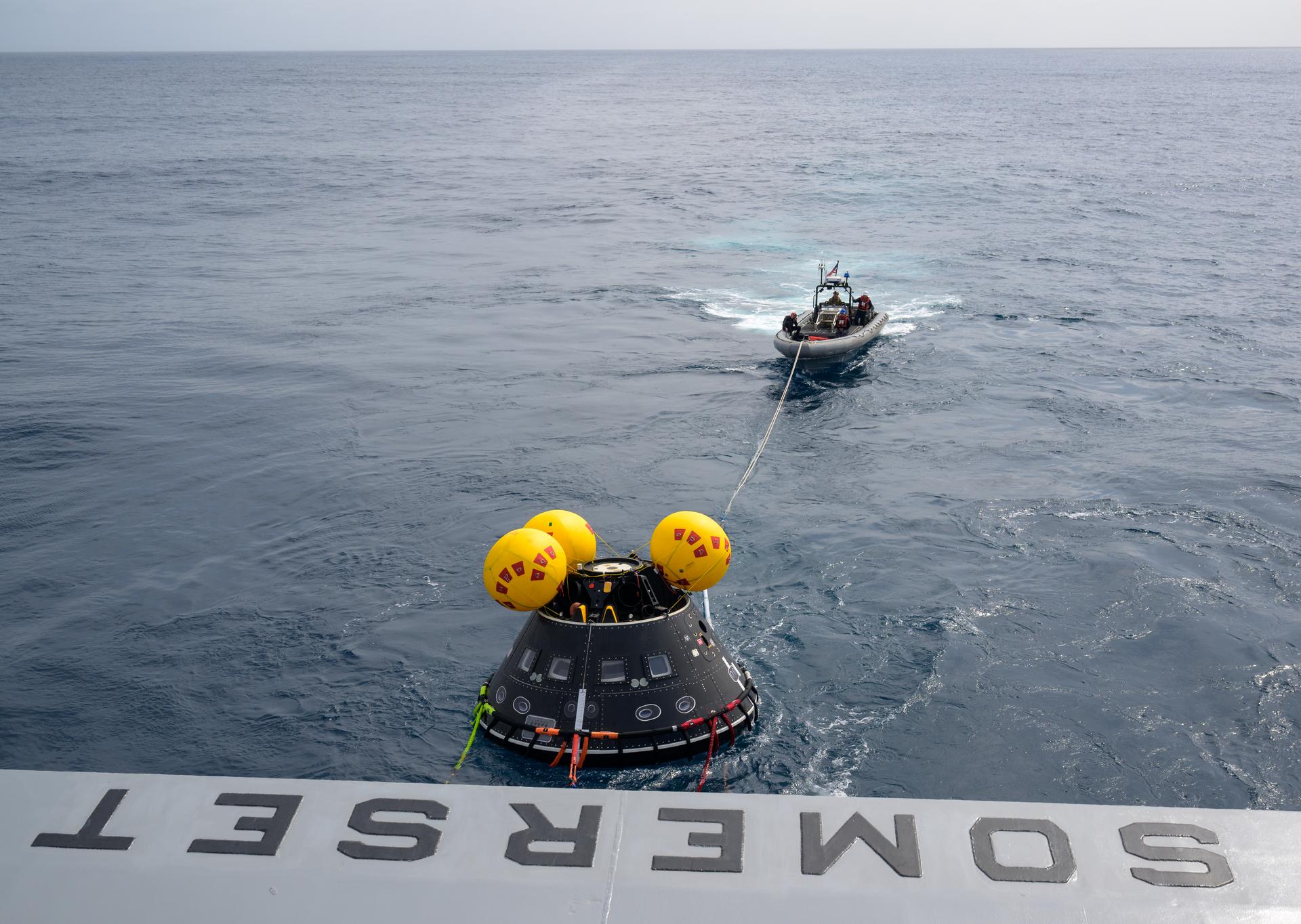

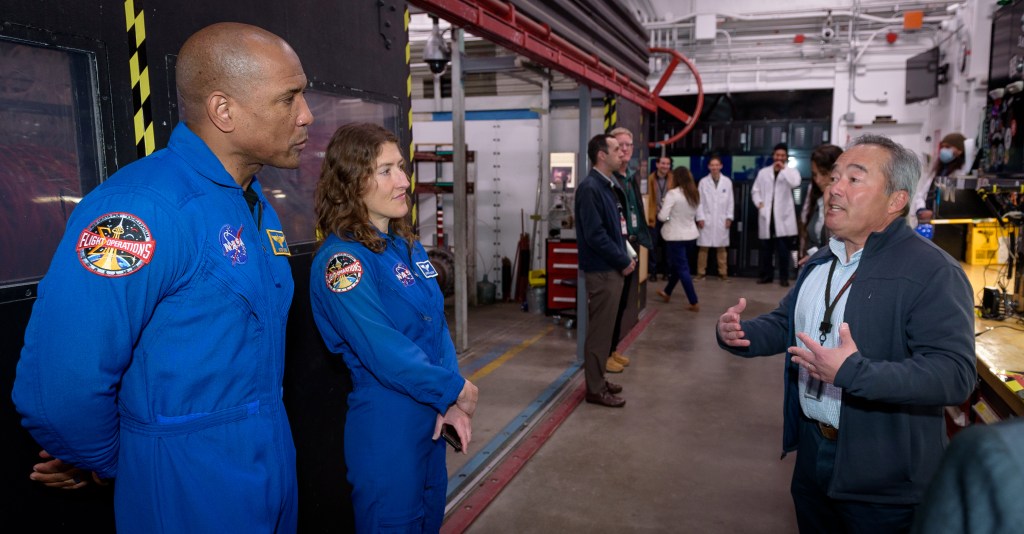







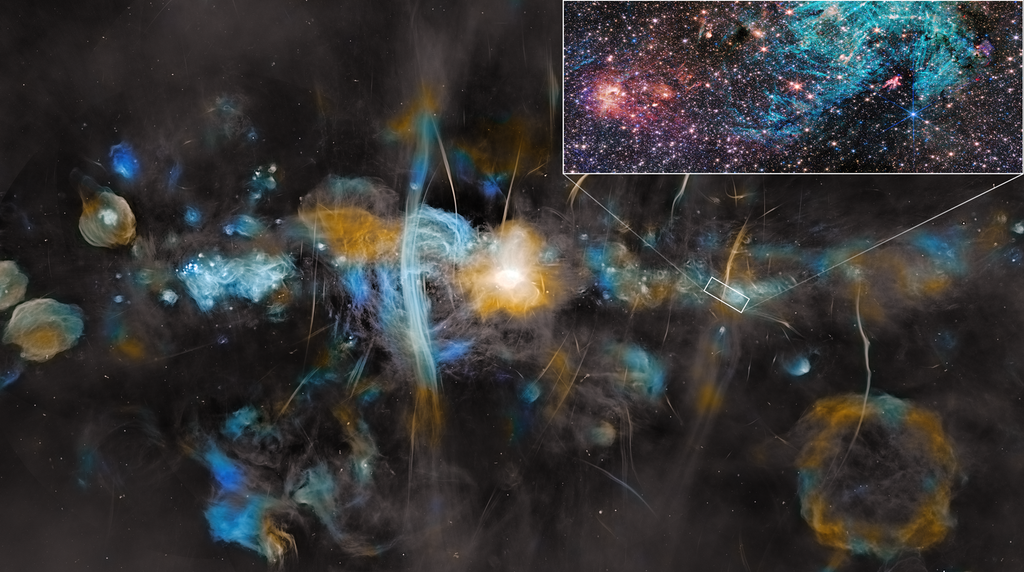



/quantum_physics_bose_einstein_condensate.jpg?w=1024)












